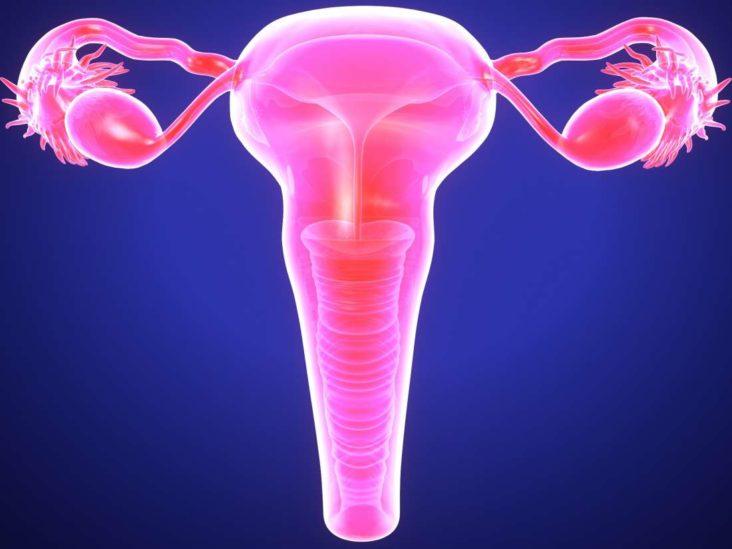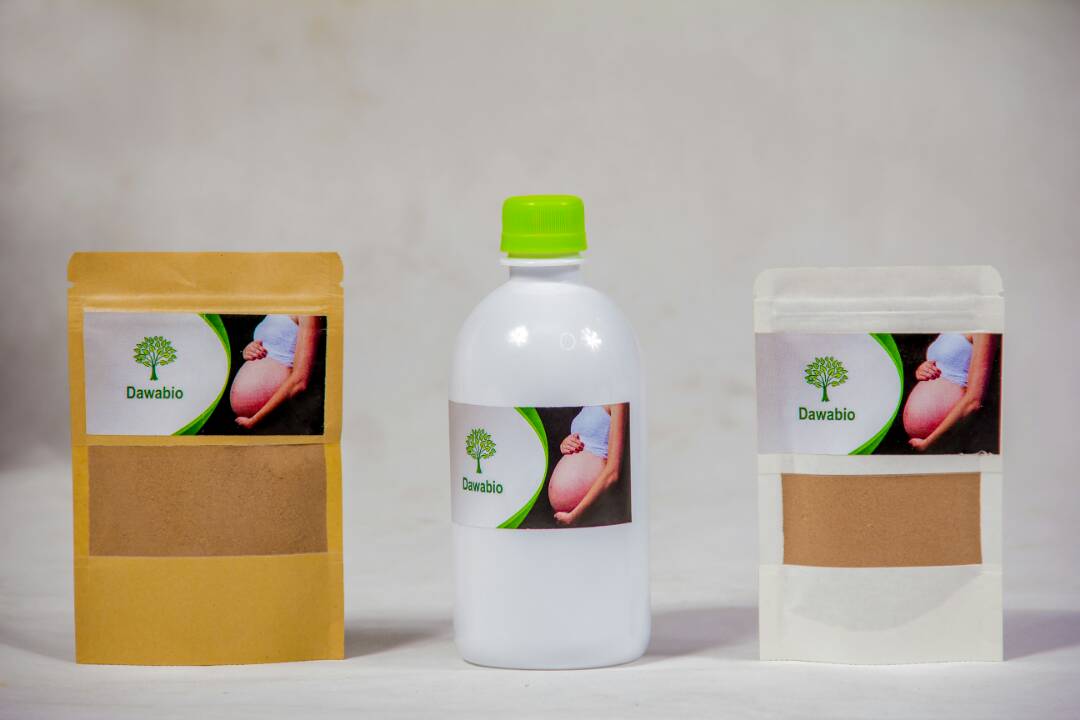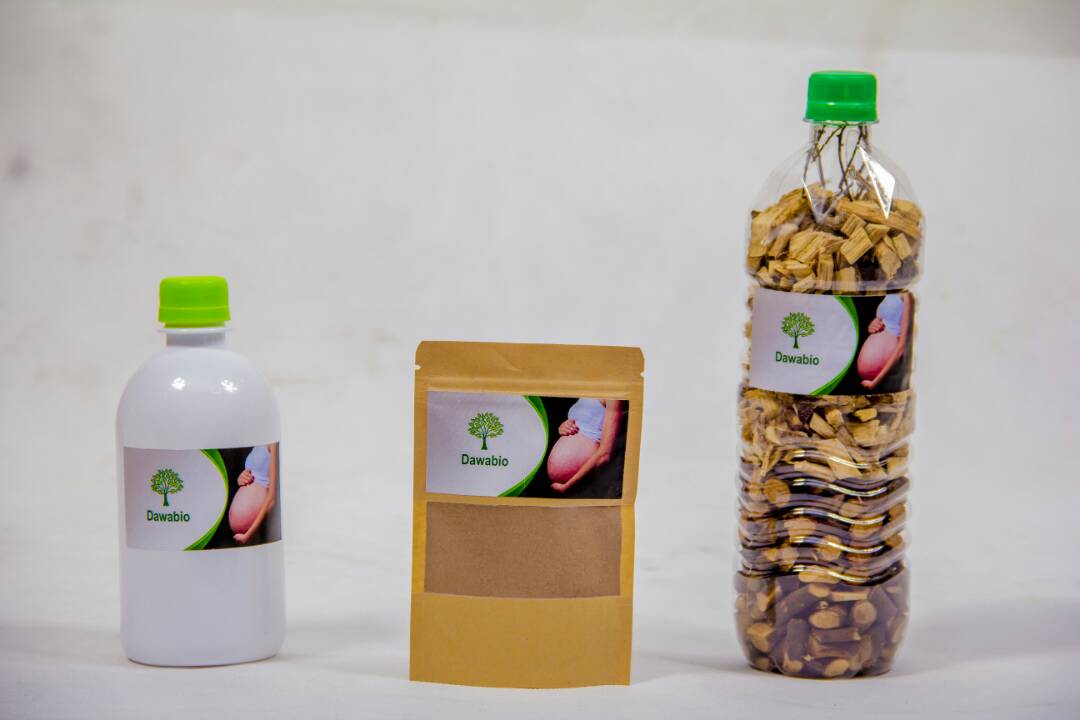endometriotic cyst

NABOTH CAUSE CYST: Natural treatment
NABOTH CAUSE CYST
A cyst Nabothian (or egg Naboth ) is a cyst mucous that develops at the neck of the uterus; it is due to the obliteration of the excretory ducts of the glands of the uterine cervix. Here is the natural herbal treatment to cure Naboth cysts. Click on the image below to discover this natural treatment.
We deliver all over the world.
For more information, you can contact our experts on +229 51374202 direct line or by WhatsApp at the same number.
This is the accumulation of mucus produced by the glands of the endocervix (columnar epithelium) which cannot be evacuated due to the physiological covering of the gland by squamous epithelium (a phenomenon of repair). These cysts are most often visible at the level of the ectocervix, presenting on colposcopy as a translucent cyst whose wall is covered with vessels. They can also sit in the endocervix and be visible on ultrasound.
Causes of Naboth's cyst
The Naboth cysts are formed:
- Either because there is a development of the tissue of the cervix (following childbirth for example).
- Either in older women, because the natural secretions are retained in the thinned tissue of the cervix.
The cause of the appearance of a Nabothian cyst is the obstruction of the ducts carrying the secretions from the mucus glands. It is a common phenomenon in a woman after childbirth, the lining of the cervix develops, or in postmenopausal women, in whom the lining of the uterus becomes thinner.
The cysts of Naboth often appear after repair ectropion: epithelium squamous metaplasia (newly formed) covers the glandular endocervical crypts, without colonizing, and locked glands continue to secrete, which is responsible for their expansion; the glands then form small cysts which protrude under the squamous epithelium.
These retentional glandular cysts are visible on the ectocervix.
Nabothian cysts form when the mucus-producing glands in your cervix become covered with skin cells and become blocked. The skin cells clog the glands, causing mucus to build up. This causes a cyst to form on the neck that looks like a small white bump.
Childbirth and physical trauma to the cervix can cause Nabothian Trusted Source cysts in some women. During childbirth, excess skin cells can grow on the mucous gland and trap the mucus, causing cysts to form. Physical trauma around the cervix can cause excess tissue on top of the mucous glands during the healing process and trap mucus, which can also cause these cysts to appear. Cysts caused by physical trauma are especially common during recovery from chronic cervicitis, in which cervical tissue is inflamed.
You are more likely to develop these cysts if you are pregnant or of childbearing age. Childbearing age lasts from puberty until the onset of menopause, which can sometimes reach 40 or 50 years.
You might also be at risk of developing similar cysts if you have a disorder called malignant adenoma. This condition is a type of neoplasia that affects the production of mucus in the cervix of your uterus. These cysts are often identical to Naboth's cysts. Talk to your doctor about screening for malignant adenoma if you are concerned that your Naboth cyst is the result of this condition rather than other causes.
In most cases, Nabothian cysts appear when new tissue grows back on the cervix after childbirth. This new tissue blocks the openings of the nabothian glands in the cervix, trapping their mucous secretion in tiny pockets under the skin. Nabothian cysts are a normal finding on the cervix of women who have had children. They are also seen in postmenopausal women whose cervical skin has thinned with age. Less often, nabothian cysts are linked to chronic cervicitis, long-term infection of the cervix.
The mucus-producing gland in the cervix is covered with cells and skin clogs. Physical trauma and childbirth cause additional skin cells to grow in the mucous gland and trap the mucus, resulting in the cyst forming.
Infection: The cervical glands produce large amounts of mucus to protect the area from all kinds of infections and inflammation. This process can be understood as the body's natural way to wash away foreign objects that can cause health problems.
As the level of mucus production increases, there will obviously be an increased risk of blockage and cyst formation. Therefore, infections and inflammation can cause the growth of Naboth cysts.
Hormonal changes: the changes hormonal play a direct role in the formation of such cysts. For example, menopause is a stage in which a woman may experience thinning of the skin of the cervix. It causes inflammation of the cervix causing cervical infection.
The cervix connects the two most important parts of the female reproductive system. Therefore, hormonal changes will have a direct effect on him.
These cysts mainly develop during pregnancy, childbirth or menopause. Therefore, the development of these cysts could be the result of changes in hormone levels.
Trauma: Injury or scarring of the tissues lining the cervix could lead to the formation of Naboth's cysts. The body tries to grow new tissue to repair and heal the injured area, but sometimes there can be an overgrowth of the tissue.
Pregnancy: Normally, the cervix remains open to allow the movement of semen from the vagina to the uterus and the flow of menstrual fluid from the uterus to the vagina.
However, during pregnancy, the body's mechanism closes the cervix to ensure the development of the fetus in the womb. New tissue grows on the mucous gland after childbirth due to the process of metaplasia.
If these tissues grow excessively, they could block the glands and prevent mucus from draining out, leading to the development of Naboth cysts.
Neck Problems: Postmenopausal women may experience thinning of the skin of the cervix. Inflammation of the cervix is a common effect of cervicitis.
These problems, along with other sexually transmitted infections of the cervix, could lead to the development of cysts on the surface of the cervix.
We deliver all over the world.
For more information, you can contact our experts on +229 51374202 direct line or by WhatsApp at the same number.

NABOTH'S CYST AFTER CHILDBIRTH: Natural treatment
A cyst: what is it?
The cyst is a kind of closed pocket, containing liquid, a semi-solid substance or even gas. It can appear at any age in life, in any area of the body. Depending on their location, we can distinguish hundreds of different types of cysts. The majority of them are benign and only cause a problem when they are too large. The appearance of a cyst can have many possible causes: infection, birth defect, shock, tumor (benign or cancerous), etc. For example, sebaceous cysts, which form in the sebaceous glands of the skin, are due to an abnormal accumulation of sebum. The popliteal cyst, which forms in the fold of the knee, is caused by arthritis or trauma to the knee. Dawasanté experts provide you with a natural treatment based on medicinal plants to cure Naboth cysts permanently. Click on the image below to discover this natural treatment .
What are the symptoms?
When cysts form under the skin, they are easily detectable: they form a more or less large ball under the skin, most often painless. On the other hand, cysts located deeper in the body are often asymptomatic. However, the largest of them put pressure on neighboring organs, triggering pain, and various disorders depending on the location (eg: blood in the urine for the renal cyst).
Focus on the main female cysts
In women, the breast cyst is common: the lump is solid, its contours are well defined. It may change in size during the period of the menstrual cycle or disappear/reappear spontaneously from one menstrual cycle to another. This type of breast cyst is harmless: it does not increase the risk of breast cancer.
Another common cyst is the Bartholin gland cyst, which manifests as a sharp pain or lump at the entrance to the vagina. It is due to mild infection of the Bartholin glands and is not a health hazard. Many women are affected at least once in their life.
As for ovarian cysts, there are different types. Most often asymptomatic, they can sometimes cause abdominal pain or irregular cycles. In 9 out of 10 cases, these are functional cysts that are not serious: they appear during a menstrual cycle and then disappear on their own after a few cycles. On the other hand, for organic ovarian cysts, there is a risk of cancerous degeneration, which is quite low before the age of 50.
Naboth's cyst, common after childbirth
Naboth's cyst is located on the wall of the cervix. It appears in many women after childbirth or sometimes also after menopause. Completely painless, it does not represent any danger to health.
Childhood congenital cyst
The thyroglossal cyst can be present from the birth of the child or appear a little later, usually before the age of 2: a large pocket full of fluid forms on his neck or face. This cyst is due to a fairly frequent embryonic malformation and not very serious. Antibiotics can reduce its size, but surgical removal is the best solution to prevent recurrence and limit the risk of superinfection.
Diagnosis of cysts
The cysts' skin is easy to diagnose but others require an ultrasound. A scanner is also often used: its purpose is to verify that it is indeed a simple cyst and not cancer. A biopsy is sometimes also requested: the contents of the cyst are normally punctured with a needle for examination.
How to treat a cyst?
A small, asymptomatic cyst with no risk of developing into cancer does not require treatment. A cyst that is annoying by its size and symptoms can, on the other hand, be drained using a needle or a catheter. Another solution: surgical removal. This last option is particularly used in the presence of cancer risk.
The cyst Bartholin's gland is manifested by a lump or pain in the vagina. Bartholin's glands produce a protective and lubricating fluid that can sometimes become infected and cause swelling or cyst formation. This cyst is harmless and can affect all women at some point in their life.
An ovarian cyst is a fluid-filled pocket that develops on the surface or inside of an ovary. Ovarian cysts are very common in women and rarely become cancerous before the age of 50.
There are several types of ovarian cysts. The functional cysts appear during the ovulation cycle (release of an egg from the ovary). Most painless, harmless, and non-cancerous, they usually go away on their own after 2 or 3 menstrual cycles.
Other types of cysts are due to benign tumors such as dermoid cysts, endometriosis cysts (or endometrioma) in women with endometriosis. The polycystic ovary syndrome is not due to cysts but the follicles on the ovaries that make up the volume.
Some benign ovarian cysts can increase the risk of ovarian cancer. Some malignant tumors and cancers of the ovaries start with a cyst in the ovaries.
A Naboth's cyst (or Naboth's egg) is a mucus-filled pocket that forms on the wall of the cervix (The cervix is lined with glands that produce mucus). This type of cyst is common in women after childbirth or in postmenopausal women whose uterine wall thins with age. This cyst has virtually no symptoms and is usually detected during a routine pelvic exam. It does not present any risk to health.
The cysts of Naboth comes from distension of endocervical glands and are usually asymptomatic. However, they can be multiple and exceed 2 cm to form cystic masses
.
On MRI, they are differentiated from cervical cancers by their T2 hyper signal, their intermediate signal in T1, and the absence of contrast enhancement. Moreover, the limit with the cervical stroma, in hyposignal, is clear.
Among the differential diagnoses, we can cite exceptional cervical endometriosis and malignant adenoma which accounts for 3% of cervical adenocarcinomas.
|
|
Cervical stenosis |
Cervical stenosis is common during menopause or after endo-uterine maneuvers. It most often causes an obstacle to the flow of secretions and presents as uterine distension of undetermined origin.
The role of MRI is to confirm the normality of the zonal anatomy of the cervix and uterus, to eliminate the presence of abnormal endocavitary tissue and to specify the fluid nature (serous or haematic) of the endocardial retention. uterine.
|
|
Cervical fibroma |
Cervical fibroma is a rare localization of uterine myomas.
Difficult to diagnose on ultrasound, it presents on MRI the same signal abnormalities as in the case of localization in the uterine body.

NABOTH CYST AND INFERTILITY: Natural treatment
NABOTH'S CYSTS FOR INFERTILITY
The Naboth cysts are tiny cysts that form on the surface of your cervix. Your cervix connects your vagina to your uterus. It is sometimes called the cervical canal. Naboth's cysts are filled with mucus which is secreted by the cervical glands. Sometimes the small bumps are called cervical cysts, mucinous retention cysts, or epithelial cysts. Naboth's cysts are quite common. They do not pose a threat to your health and are not a sign of cervical cancer.
If you are looking for a natural treatment to fight Naboth cysts, the experts at Dawasanté have the solution for you. Click on the image below to discover this natural treatment.
We deliver all over the world.
For more information, you can contact our experts on +229 51374202 direct line or by WhatsApp at the same number.
NATURAL TREATMENT
The natural treatment that we offer to cure Naboth cysts is essentially made from natural herbal teas. Herbal tea is made up of plants whose active ingredients are able to suppress the symptoms that you feel and allow you to have a total recovery. This is the solution to find a normal life.
To discover our natural remedy to cure Naboth cysts, click here
The causes
The cervix is the tissue that connects the uterus to the vagina. The cervix has two distinct parts lined up in two different types of cells:
- Glandular cells, which line the area of the cervix closest to the uterus
- · Squamous cells, which line the part of the cervix closest to the vagina
Glandular and squamous cells meet to form an area called the transformation zone. This area undergoes many changes over the course of a woman's life, especially during pregnancy and childbirth.
Cells in the transformation zone are constantly changing, making this zone very susceptible to abnormal cell growth.
A number of conditions can cause a lump on the cervix and are described in the following sections.
Cervical polyps
A cervical polyp is a bulb-shaped, non-cancerous growth that develops on the cervix. The appearance, size and color of polyps can vary widely. It is not known why cervical polyps develop, but some of the possible causes of these polyps can include:
- High estrogen levels
- Inflammation of the cervix
- Blocked blood vessels
In most cases, cervical polyps are benign, with only 1 in 1,000 being cancerous. The doctor can remove the cervical polyps in a simple procedure.
Pregnant women can develop small white bumps called Naboth's cysts. They can form when excess skin cells block the mucous glands lining the cervix. Women may not know they have a Nabothian cyst until their doctor finds one during a routine pregnancy check-up. Although Naboth's cysts usually don't cause symptoms, they can rupture and release a foul-smelling discharge or blood.
Cervical fibroids
Fibroids, or myomas, are non-cancerous tumors that usually grow in muscle tissue in the uterus. Although rare, fibroids can also grow in the cervix.
Fibroids can vary in size and some can grow large enough to cause weight gain and swelling of the lower abdomen. Fibroids are almost always benign. Cancerous fibroids are rare and occur in less than 1 in 1,000 cases.
Cervical cancer
A lump on the cervix may indicate cervical cancer. Early Stage Cervical Cancer May Not Cause Symptoms Reliable Source. Cervical cancer can affect one or both types of cells that line the cervix.
Symptoms
Naboth cysts can cause a variety of symptoms if any. They can cause the following symptoms:
- Heavy or painful periods
- Bleeding between periods
- Foul-smelling vaginal discharge
- Pressure or swelling of the lower abdomen
- Frequent need to urinate
- Pain in the lower back, pelvis or legs
- Pain during intercourse
To diagnose the underlying cause of a lump on the cervix, the doctor will collect the following information:
- Family history
- · medical background
- Current drugs
They may also perform a physical exam and other diagnostic tests:
· Ultrasound tests use sound waves to create images of structures inside the abdomen and pelvis.
· MRI scans use a strong magnetic field and radio waves to create detailed images of the tissues inside the body.
· Hysteroscopy can help diagnose conditions affecting the uterus. During the procedure, a healthcare professional will guide a thin tubular device called a hysteroscope through the vagina and uterus. The hysteroscope captures images inside the uterus and transmits them to a computer.
· Laparoscopy uses a camera attached to the end of a thin tube to examine female reproductive organs.
· Biopsies are small samples of tissue from the lining of the cervix. After removal, the doctor will send the sample to a laboratory for analysis. Biopsies can detect the presence of precancerous or cancerous cells.
Complications
Usually, fibroids do not cause serious complications. However, untreated fibroids can increase the risk of infertility and cause problems during pregnancy, such as:
- Placental ablation
- · premature delivery
- · miscarriage
Having fibroids does not increase the risk of developing cancerous fibroids. Naboth's cysts rarely cause serious complications and often go away without treatment.
However, large Naboth cysts can distort the shape of the cervix. These cysts may require excision or surgical removal.
Medical treatments
Benign growths, such as cervical polyps and Naboth's cysts, often do not require treatment.
However, even benign growths can cause problems. Cysts and polyps can grow large enough to distort the shape of the cervix and may require surgical removal or drainage.
Treatment options for bumps on the cervix may include:
Surgery
Here are examples of surgical treatments for bumps on the cervix:
· Polypectomy: this method is to remove a polyp of the cervix with forceps or a string. This procedure usually takes place in an outpatient clinic.
· Electro-coagulation ablation: This method uses the heat of an electric current to remove a cervical cyst.
· Myomectomy: During this procedure, a surgeon will remove the fibroids through a small incision in the lower abdomen.
Medication
Gonadotropin-releasing drugs (GnRH) agonists and antagonists can treat symptomatic cervical fibroids.
GnRH drugs cause the body to make less estrogen and progesterone, which effectively reduces the size of fibroids without harming fertility.
Taking over-the-counter pain relievers, such as ibuprofen and acetaminophen, may help reduce cramps and lower back pain associated with the cervical lump.
Risk factors
It is not known exactly what causes the bumps on the cervix. However, there are certain factors that can increase the risk of developing a lump on the cervix.
Risk factors for cervical lumps include:
- Taking birth control pills containing estrogen
- Having a family history of fibroids, polyps, cysts or cervical cancer
- Inflammation of the cervix due to infections such as HPV, herpes, or yeast infections
- Be overweight or obese
- Having a weakened immune system
Prevention
Maintaining a healthy weight and controlling hormone levels can help reduce the risk of developing a lump on the cervix.
However, leading a healthy lifestyle does not guarantee complete protection against conditions that can cause a lump on the cervix. Participating in routine pelvic exams and Pap smears can help detect cervical abnormalities at an early stage.
The widespread use of regular Pap smears over the past decades has resulted in a significant reduction in the rates of cervical cancer deaths and diagnoses.
We deliver all over the world.
For more information, you can contact our experts on +229 51374202 direct line or by WhatsApp at the same number.



